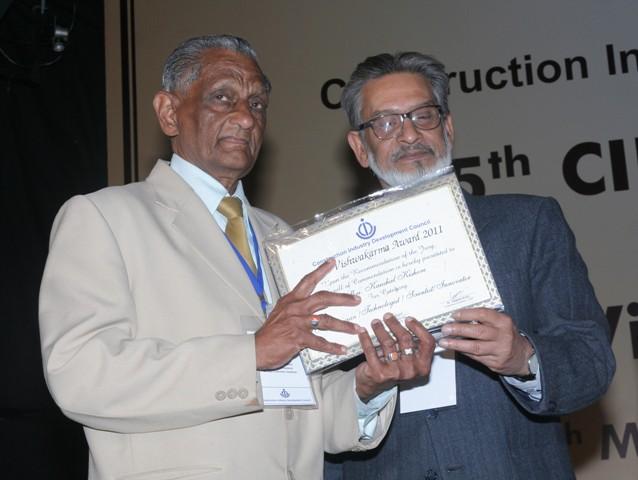By
Er. Kaushal Kishore ,
Materials Engineer, Roorkee
PORTLAND CEMENT:
Joseph Aspdin, a mason at Leeds prepared a cement in 1824 by heating a mixture of finely-divided clay and hard limestone in a furnace until CO2 had been driven off; this temperature was much lower than that necessary for clinkering. The prototype of modern cement was made in 1845 by Isaac Johnson, who burnt a mixture of clay and chalk until clinkering, so that the reaction necessary for the formation of strongly cementitious compound took place. The name ‘Portland Cement’ was given due to the resemblance of the colour and quality of the hardened cement to Portland stone- a limestone quarried in Doset.
The process of manufacturing of cement consists essentially of grinding the raw materials ( calcareous materials such as limestone or chalk and argillaceous materials such as shale or clay), mixing them intimately in certain proportion and burning in a large rotary kiln at a temperature of upto about 14500C when the material sinters and partially fuses into balls known as clinker. The clinker is cooled and ground to a fine powder, with some gypsum added, and the resulting product is the commercial Portland Cement so widely used throughout the world.
MAKING CONCRETE:
Just mix cement, aggregates and water, cast this mix in a mould, open the mould next day. A uniform hard mass will be found, which is known as concrete, any body can make it. The simplecity in making concrete make this material to be look like very simple in its production, yet it as not so simple. Due to ignorance about concrete no other building materials ever mis-used as concrete in the construction. In India concrete is being used in the construction since the last 70 years. Yet 80% of the builders have no proper understanding of this materials. Go to any construction site (except big construction sites) you will find that sand and aggregates are being taken in iron tasla or cane baskets to charge the mixer without the consideration of site aggregates actual grindings, moisture content and bulking of sand. The water is poured in the mixer without any measured quantity. It could be well imagine what sort of concrete structure will be made with the concrete being produced in this crude method.
Most of the contractors, builders, masons etc. still follow 1:2:4 or 1:1.5:3 mixes they are not aware of Design Mixes and Concrete Admixtures. This paper described how Design Mixes can be converted into volume with 1 Bag Cement, 2 Boxes of sand and 4 Boxes of Aggregate. The site practical problem is the dispersion of water and liquid admixtures into the mixer. For this the site should fabricate a plastic circular graduated measuring container of 30 lit capacity with a tap fitted at its bottom. This container is to be fitted on top of the mixer. From this container water and liquid admixtures can conveniently poured direct into the mixer in a measured quantity.
Read More


